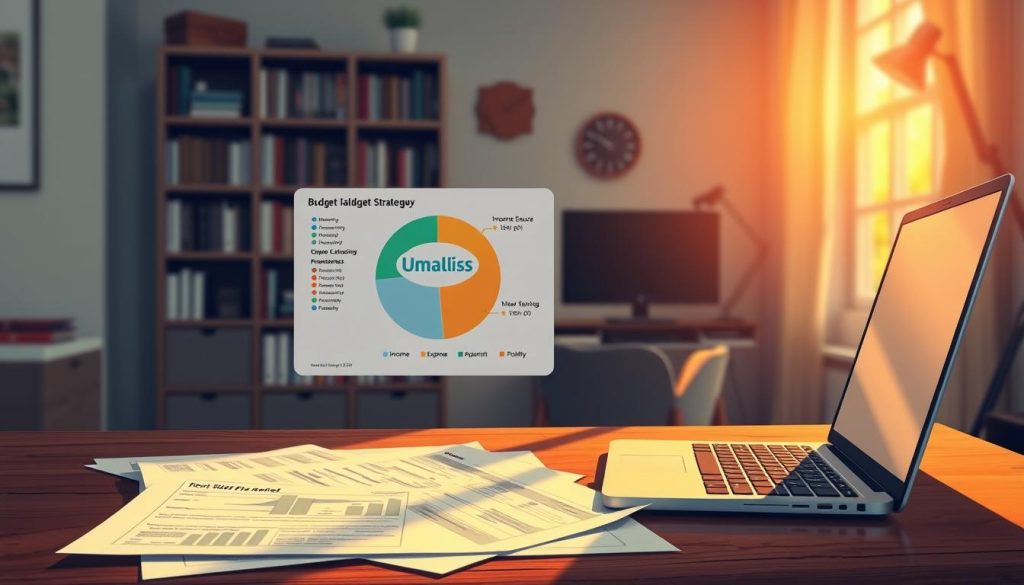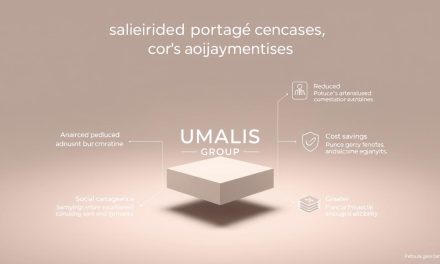Did you know 38% of self-employed professionals cite irregular cash flow as their top stressor? Unlike traditional employees, independent workers face unique hurdles that demand smarter strategies for managing earnings. This uncertainty often overshadows the freedom of freelance work, making stability feel out of reach.
We understand your priorities lie in growing your business, not tracking spreadsheets. However, a structured approach to money matters isn’t just helpful—it’s essential. Without it, unexpected expenses or slow months can derail progress toward personal and professional goals.
This guide focuses on creating systems that adapt to your dynamic career. You’ll learn how to separate business and personal funds, build emergency reserves, and forecast income patterns. These steps transform unpredictability into a manageable framework, letting you focus on what you do best.
Table of Contents
Key Takeaways
- Nearly 4 in 10 independent professionals struggle with inconsistent earnings
- Traditional budgeting methods often fail for project-based work structures
- Clear separation of business/personal funds reduces tax complications
- Emergency funds covering 3-6 months of expenses prevent crisis situations
- Quarterly financial reviews help adjust strategies to changing workloads
Financial Planning for Freelancers: Why It Matters
Why do 1 in 4 self-employed workers face payment delays that threaten their operations? The gig economy’s flexibility masks complex challenges requiring tailored solutions. Unlike traditional roles, your earnings depend entirely on client relationships, project timelines, and market demand shifts.
Navigating Unpredictable Work Cycles
Project-based work creates income swings that standard budgeting can’t address. A 2025 study reveals 25% of independent professionals struggle with late payments, disrupting cash flow projections. Three critical patterns emerge:
- Seasonal demand fluctuations affecting project availability
- Extended payment terms stretching 30-90 days post-delivery
- Unexpected expenses without employer-sponsored safety nets
Building Resilience Through Systems
Effective strategies transform volatility into manageable frameworks. Start by separating business and personal accounts—this clarifies tax obligations and spending limits. Next, establish automated savings capturing 20-30% of each payment for:
- Emergency reserves (3-6 months’ expenses)
- Quarterly tax obligations
- Professional development investments
These steps create breathing room during lean periods while positioning you for growth opportunities. When clients know you’re financially stable, negotiations shift in your favor—enabling selective project choices and rate increases.
Creating a Realistic Budget for Irregular Income

Structuring cash flow becomes critical when earnings vary monthly. Begin by reviewing your last 6-12 months of payments to identify patterns. This reveals your true earning capacity after accounting for slow periods and client payment delays.
Calculating Your Average Monthly Income
Add your total earnings from the past year, then divide by 12. If you started recently, use a 6-month average. This baseline helps set realistic limits for spending and saving.
| Month | Income (€) | Notes |
|---|---|---|
| January | 4,200 | Post-holiday surge |
| February | 3,800 | Client payment delay |
| March | 4,500 | New contract signed |
| 6-Month Average | 4,100 | Baseline for budgeting |
Allocating Funds for Fixed and Variable Expenses
Use this adapted 50/30/20 framework:
- 50% Essentials: Rent, utilities, insurance
- 30% Business Needs: Marketing, software, travel
- 20% Security: Taxes, emergency fund
Track variable costs like equipment upgrades separately. During high-earning months, set aside surplus funds using strategies for managing variable income. This creates buffer zones for lean periods without compromising growth plans.
| Category | % Allocation | Example Expenses |
|---|---|---|
| Fixed | 50% | Rent, loan payments |
| Variable | 30% | Client meetings, courses |
| Savings | 20% | Tax reserves, retirement |
Quarterly reviews help adjust allocations as your business evolves. Remember – flexibility within structure prevents budget breakdowns when projects shift unexpectedly.
Tracking Income, Expenses, and Cash Flow

How much time do independent professionals waste chasing payments or reconciling accounts? Effective tracking systems transform chaotic workflows into organized processes. Clear visibility into your earnings and costs prevents budget surprises while highlighting growth opportunities.
Utilizing Effective Money Management Tools
Start with a basic spreadsheet to log projects, client details, and payment dates. For example:
| Project | Client | Invoice Date | Status |
|---|---|---|---|
| Website Redesign | ABC Corp | March 5 | Paid |
| SEO Audit | XYZ Ltd | April 12 | Pending |
Upgrade to specialized tools like Bonsai or FreshBooks for automation. These platforms handle recurring invoices, expense categorization, and payment reminders—saving 5-7 hours monthly.
Monitoring Payment Cycles and Cash Flow
Identify patterns in client behavior using your tracking data. Notice:
- Clients who consistently pay within 7 days vs. those requiring reminders
- Seasonal spikes in project requests affecting income stability
- Recurring business costs that could be reduced
Set automated alerts for overdue payments and review cash flow weekly. This proactive approach ensures you maintain control without constant manual checks.
Separating Business and Personal Finances
Have you ever transferred client payments directly to your personal account? This common mistake creates confusion when tracking earnings and expenses. Clear financial boundaries protect both your livelihood and peace of mind.
Benefits of Dedicated Business Accounts
Opening separate banking tools simplifies money management. Business accounts help you:
- Track project-related expenses effortlessly
- Calculate quarterly tax payments accurately
- Demonstrate professionalism to clients
French institutions like Boursorama Banque offer tailored solutions for independent workers. Their business packages often include expense categorization and automated reports.
Simplifying Tax Reporting and Record-Keeping
Merged accounts turn tax season into a nightmare. Separate records let you:
- Identify deductible costs in seconds
- Prove business legitimacy during audits
- Calculate your salary without guesswork
Set monthly transfers from your business to personal account. This mimics traditional payroll systems while maintaining flexibility. One Paris-based graphic designer reduced audit preparation time by 70% using this method.
Proper account separation builds credibility with lenders too. Banks view organized finances as low-risk, improving loan approval chances for equipment upgrades or office space.
Navigating Tax Obligations and Deductions
Tax management remains a top concern for 63% of independent professionals according to recent surveys. Unlike salaried employees, you shoulder full responsibility for calculating and remitting payments—a task requiring year-round attention.
Understanding Your Tax Responsibilities
Set aside 20-25% of each payment immediately. This covers:
- Income tax: Calculated on net profits after deductions
- Self-employment tax: Social Security and Medicare contributions
Quarterly deadlines prevent year-end surprises:
| Period | Deadline |
|---|---|
| Q1 | April 15 |
| Q2 | June 15 |
| Q3 | September 15 |
| Q4 | January 15 |
Penalties apply if you owe $1,000+ annually without making timely estimates.
Maximizing Business Expense Deductions
Track every euro spent on operations. Common deductible costs include:
- Home office space (€5.5/m² up to 30m²)
- Professional tools/software subscriptions
- Client meeting travel (metro tickets included)
Often overlooked deductions:
- Bank fees for business accounts
- Preventive health checkups
- Childcare during work hours
Use apps like Expensify to photograph receipts instantly. Detailed records let you maximize deductible expenses while complying with French tax laws.
Building an Emergency Fund and Financial Buffer
What separates thriving independent professionals from those constantly stressed about bills? The answer lies in creating robust safety nets tailored to unpredictable work cycles. Unlike traditional employment, self-employment requires proactive preparation for income gaps and unexpected costs.
Determining How Much to Save
Start by calculating essential monthly costs:
| Expense Category | Average Cost (€) |
|---|---|
| Housing & Utilities | 1,200 |
| Insurance | 300 |
| Business Operations | 650 |
| Total Monthly | 4,150 |
Multiply this total by 6-12 months. For our example:
- 6-month buffer: €24,900
- 12-month cushion: €49,800
Consider extending your target if you work in volatile industries or have dependents. A Paris-based web developer shared: « My 9-month reserve helped survive three client cancellations without panic. »
Automating Your Savings for Consistency
Set up automatic transfers using these guidelines:
| Monthly Income (€) | Savings Rate | Weekly Transfer |
|---|---|---|
| 3,500 | 12% | 105 |
| 5,000 | 15% | 188 |
| 7,000+ | 20% | 350 |
High-yield savings accounts earn 2-4% interest while keeping funds accessible. Label the account clearly—« Emergency Only »—to prevent casual withdrawals. During surplus months, add extra contributions while maintaining baseline automation.
Remember: This fund acts as your business continuity insurance. Treat it with the same seriousness as client contracts, replenishing any used amounts within 90 days. Pair your reserve with separate accounts for taxes and retirement to maintain clear financial boundaries.
Planning for Retirement and Future Investments
How many self-employed professionals overlook their golden years while managing daily operations? Building security beyond next month’s projects requires deliberate action today. Start by treating retirement contributions as non-negotiable client deliverables.
Exploring Savings Vehicles for Independent Careers
French freelancers can leverage tax-advantaged options like PER (Plan d’Épargne Retraite) or Madelin contracts. These tools let you:
- Reduce taxable income through annual contributions
- Access funds under specific conditions before retirement
- Choose between capital protection or growth-focused strategies
A Lyon-based consultant shares: « Automating 15% into my PER created €42,000 in seven years without impacting cash flow. » Consider mixing personal and professional schemes for diversified exposure.
Growing Wealth Through Strategic Allocation
Long-term growth demands more than savings accounts. Begin with low-risk options like assurance-vie, then gradually add:
- ETF portfolios mirroring global markets
- Sector-specific funds aligned with your expertise
- Real estate crowdfunding for passive income
Rebalance investments quarterly, just like client portfolios. Partner with fee-only advisors who understand independent workers’ unique needs. Remember – consistent small contributions outperform sporadic large deposits through compounding magic.
FAQ
How do I budget effectively with irregular earnings?
Start by calculating your average monthly income using the lowest-earning months as a baseline. Apps like YNAB or Mint help allocate funds for fixed costs (rent, utilities) first, then variable expenses. Aim to save 20-30% of each payment for taxes and emergencies.
Why should I separate business and personal accounts?
Dedicated business accounts (like Chase Business Banking or Novo) simplify tracking deductible expenses, improve cash flow visibility, and reduce stress during tax season. Mixing funds risks missed deductions or IRS scrutiny.
What tax deductions can freelancers claim?
Common deductions include home office costs (using the IRS simplified method), software subscriptions (Adobe Creative Cloud, QuickBooks), internet bills, and mileage. Always keep receipts and consult a CPA for industry-specific rules.
How much should I save for emergencies?
Aim for 3-6 months’ worth of living expenses. Freelancers in volatile fields (e.g., creative services) might target 8 months. Use high-yield savings accounts like Ally Bank or Marcus by Goldman Sachs for faster growth.
What retirement plans work best for self-employed professionals?
Options like SEP IRA (up to 25% of net earnings) or Solo 401(k) (employee + employer contributions) offer tax advantages. Platforms like Fidelity or Vanguard provide low-fee plans tailored to freelancers.
How do I handle uneven cash flow between projects?
Track payment cycles using tools like QuickBooks Self-Employed and negotiate staggered payments with clients. Build a 1-2 month buffer in your business account to cover gaps without dipping into personal savings.
Which tools help manage freelance finances efficiently?
Use FreshBooks for invoicing, PocketGuard for expense tracking, and HoneyBook for contract management. Automate savings with Digit and estimate taxes using TaxAct’s self-employed version.





